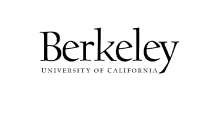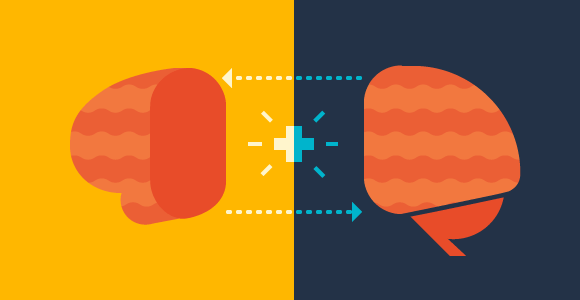About the Video
The specter of autism is scary for any new parent, especially given the most recent estimates. Whether or not we're looking at a true epidemic or can chalk the numbers up to more liberal diagnostics, an estimated 1 in 50 children has autism spectrum disorder, or ASD.1 Parents, doctors, and researchers are scrambling to pinpoint a cause, and hopefully, a cure or means of prevention. This desperate search has lead many well-meaning parents to scapegoat vaccines as the cause of their child's illness.
In 1998, Andrew Wakefield, published a study claiming a causal link between the measles, mumps, and rubella (MMR) vaccine and autism. Parents of children with autism celebrated the research and began a wildly successful campaign against the widespread vaccination. In 2010, Wakefield's UK medical license was revoked after it was found that he engaged in unethical research practices and falsified his findings.2 Despite subsequent studies that find no link between autism and the MMR vaccine, the damage has been done. A large swath of desperate parents is convinced that vaccines are to blame.
Early theories blamed autism rates on the vaccine preservative thimerosal, an organic mercury-containing compound.3 Parents were convinced that autism must be a result of mercury poisoning. When thimerosal was removed from vaccines and autism rates continued to rise, affected parents shifted the goal post and decided that the number of vaccines must be the culprit, or too many too soon.
Mounting scientific evidence disproves any link between vaccines and autism. This is cold comfort to parents raising children with an ASD, but it is important that people understand this. These well-meaning parents, who desperately love their children, have consequently put all children at risk in their successful attempts to curb vaccinations. Vaccines are perhaps the greatest public health success in history. It would be devastating to turn back the clock.4
1 Marks, Kevin, M.D. "Artificial and Real Reasons behind Autism Epidemic." The Register-Guard. The Register-Guard, 22 Apr. 2013. Web. 1 May 2013.
2 "Andrew Wakefield." Wikipedia. Wikimedia Foundation, Inc., 29 Apr. 2013. Web. 01 May 2013.
3 United States. U.S. Food and Drug Administration. Center for Biologics Evaluation and Research. "Thimerosal in Vaccines." Fda.gov. U.S. Food and Drug Administration, 20 June 2012. Web. 1 May 2013.
4 United States. U.S. Department of Health and Human Services. Vaccines.gov. U.S. Department of Health and Human Services, n.d. Web. 1 May 2013.
Transcript
“Too many, too soon!” is the favored battle cry of the anti-vaccine crowd. Too many shots, too many antigens, too close together.
By age 6, the recommended vaccination schedule exposes children to 5 live attenuated or altered organisms and 21 different antigens.1, 2 Is this a lot? Does this put an enormous burden on the immune system sending it spiraling out of control to damage our children? Let’s find out.
It has been estimated that humans can generate about 10 billion different antibodies, each capable of binding a distinct epitope of an antigen.3 Actual estimates of antibody specificities in an individual, due to exposure to various germs and other foreign materials, range between 1 million and 100 million.4
We cannot say with absolute certainty how many antigens the average human is exposed to by age 18, but let’s say, as an argument, that you’ve had most of your antigen exposure by that age. Assuming total exposure is around 1 million antigens, this equals 152 unique exposures per day. Under this conservative estimate, by age 6, the vaccine exposure would account for .006% of the total antigen exposure of the child.
If a child is exposed to 100 million antigens by age 18, the rough maximum, we’re looking at 15,520 unique exposures per day. By age 6 that would be nearly 34 million antigens, and the vaccine schedule would account for 0.00006% of exposure.
No matter how you slice it, the vaccine schedule represents a miniscule exposure to antigens and organisms compared to what people encounter as part of life. Worrying about the exposure from the vaccine schedule is like worrying about a thimble of water getting you wet while swimming in an ocean.
1 United States. Centers for Disease Control and Prevention. National Center for Immunization and Respiratory Diseases. Web. 30 Apr. 2013. <http://www.cdc.gov/vaccines/schedules/hcp/imz/child-adolescent.html>.
2 Crislip, Mark. “The Infection Schedule Versus the Vaccination Schedule.” Science-Based Medicine, 21 Nov. 2008. Web. 17 Apr. 2013.
3 Fanning, LJ, AM Connor, and GE Wu. “Development of the Immunoglobulin Repertoire.”Clinical Immunology and Immunopathology. 79.1 (1996): 1-14. Print.
4 The University of Arizona. The Biology Project. “Problem 5: Antibody Diversity.” Immunology Problem Set. Web 30 Apr. 2013.
Share/Embed
Share Video
Embed
Explore Free Online College Courses from Our Featured Universities
-
Massachusetts Institute of Technology
 232 Courses
232 Courses -
Stanford University
 161 Courses
161 Courses -
University of California, Berkeley
 64 Courses
64 Courses
Most Popular Playlists
-

First Day of Freshman Year
Relive the first day of your freshman year with a series of first lectures from introductory college courses at MIT, Yale, and Stanford.
-

Laws of Nature
Introduce yourself to the laws of nature with these free online college lectures from Yale, Harvard, and MIT.
-

Living a Good Life
Gain fresh perspective on how to live a good life with these lectures taken from free college courses offered by Yale.
Related Degrees